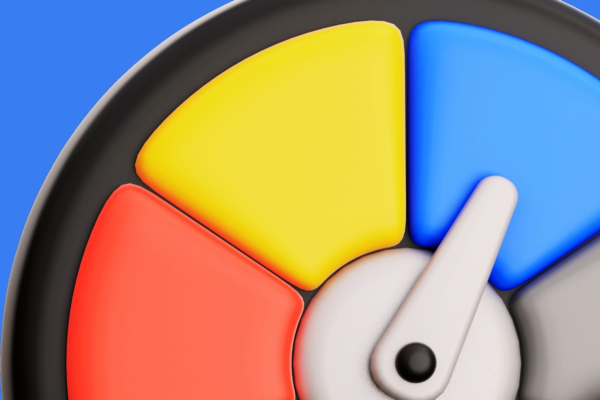
Bank Better: What is an Overdraft Fee?

Been hearing more about overdraft fees lately? This common bank fee has been in the spotlight for the last few years as more and more research comes out about just how much they affect consumers— and how much they benefit big banks. We’re here to break down the buzz and talk about what these bank fees are, where they came from, and how you can avoid them.
What is an overdraft fee?
An overdraft occurs when you don’t have enough money in your bank account to pay for a transaction, but your bank allows the charge to go through anyway.
Allowing a transaction to go through instead of automatically declining the charge may seem like a helpful bank account feature. For instance, if you were at a gas station but didn’t have sufficient funds, you would still be able to swipe your debit card to fill up your tank and repay what you owe later. However, this feature usually isn’t free. It comes with what is known as an overdraft fee. With the average overdraft fee running upwards of $35 per transaction, it can be easy to find yourself with a slew of charges if you’ve lost track of your checking account balance.
If you accidentally make a few charges without knowing that you’ve overdrawn your account, this could mean hundreds of dollars in fees on top of what it will take to get your account out of the negative.
Take the following scenario for example.
You’ve been diligent about keeping a positive bank account balance. You’re paying all your bills on time (thanks to autopay) and starting to build a small emergency fund. The first of the month rolls around, and all your bills are due— rent, utilities, and your semi-annual auto insurance premium, which makes your monthly expenses a little higher than usual. On top of that, your car wouldn’t start yesterday, and you had to pay for a quick repair. Still, with your paycheck being deposited on the first, you will have more than enough to cover everything.
However, there’s a payroll delay at work and your deposit doesn’t arrive on the day you anticipated. Your bills are automatically paid, leaving your account overdrawn. You don’t realize it until two days later, but it’s too late— you’ve been hit with four overdraft fees totaling $140.
Situations like the scenario above are common in the US. Since 2012, economists from the Board of Governors of the Federal Reserve System have conducted the Survey of Household Economics and Decisionmaking, or SHED. This survey is given to a representative sample of U.S. adults, asking a number of savings and income-related questions. In 2020, the SHED reported that 36% of Americans surveyed said they would have difficulty paying for a $400 emergency expense.
Leave Your Bank Fees Behind
No account fees. No overdraft fees. No bank fees at all.
What is overdraft protection?
You might also be familiar with the term “overdraft protection”. This also sounds like a helpful feature, but oftentimes, it’s just another way for banks to make money.
There are several ways that overdraft protection can work.
Some overdraft protection programs will automatically transfer funds from your savings account (or another secondary account, such as a line of credit) if the available balance on your checking account is too low to cover a transaction. Other overdraft programs simply allow you to overdraw your account to pay transactions for which you do not have available funds, up to a certain approved limit.
While overdraft protection programs may save you from paying an overdraft fee, they can come with their own charges or special requirements.
Overdraft Fees in America
Overdraft fees haven’t always existed. In fact, they weren’t around until the 1990s. Since then, they have become a billion-dollar money-maker for banks. In 2020 alone, banks raked in a whopping $12.4 billion dollars from overdraft fees.
According to a study by Morning Consult, nearly one in five people (18%) experienced overdrafts on their bank accounts in December 2021. Of that percentage, two-thirds were charged fees. And though overdraft fees can sneak up on anyone, they disproportionately affect Americans struggling with financial stability.
Who Overdraft Fees Hurt the Most
One of the most notable facts about overdraft fees is that they disproportionately affect low-income households. Research from the Consumer Financial Protection Bureau revealed that under 9% of consumers have (and pay fees on) 10 or more overdrafts per year. This means that less than 9% of consumers are responsible for nearly 80% of the revenue generated by overdraft fees.
A report from FinHealth stated that 95% of overdraft fees in 2020 were charged to consumers defined as financially vulnerable or financially coping. Furthermore, Black and Latinx households are more likely to pay these fees compared to their white counterparts. Black households are 1.9 times more likely to be charged overdraft fees, while Latinx households are 1.4 times more likely.
Fees like these are one reason why low-income households are more likely to be unbanked or underbanked. Because the cost of basic financial services can be so high for those who are already struggling to stay afloat, many choose to simply go without. This can lead to a nearly never-ending cycle of financial instability.
Avoiding Overdraft Fees
The good news is that overdraft fees are avoidable. Personal finance experts often recommend doing the following:
- Opt out of overdraft protection. Thanks to 2010 banking reform, banks cannot automatically enroll you in overdraft programs. You can avoid overdrafts by not opting in or opting out if you’re already enrolled in overdraft protection. Instead of letting a charge go through if you don’t have enough money in your bank account, your bank will simply decline the charge. Keep in mind that this may trigger a separate insufficient funds fee. Please check with your financial institution for the consequences of having transactions automatically declined.
- Keep an eye on your account. Don’t wait for your financial institution to notify you that your balance is in the red. Proactively check your account balance before making purchases to ensure you have sufficient funds to cover the transaction. Mobile banking apps make it easy to see your balance with a few clicks.
- Link a separate account. Oftentimes, transfer fees are lower than traditional overdraft fees. Link a savings account and keep a small balance to fall back on in case of an overdraft.
Of course, it’s easy to tell people to keep more money in their bank account to avoid overdraft fees. But that’s just not always possible for a large portion of Americans.
That’s why the best way to avoid overdraft fees is to bank with a financial institution that doesn’t charge them in the first place—like Amplify Credit Union.
Bank Better with Amplify Credit Union
Overdraft fees are among the most common— and costly—bank fees that banks charge their customers. But they aren’t the only ones.
Choose to bank better with Amplify Credit Union. With a no-fee checking or savings account, you will never have to worry about monthly maintenance fees, service fees, transfer fees, and more. This means you can spend more time focusing on growing your wealth and achieving financial security.


